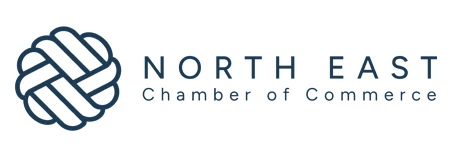Partner Article
Customer Centric Business Growth
Why is it so important to focus on the customer?
No customers = no business.
It’s that simple.
Research has shown that organisations still don’t have a handle on true customer profitability. From experience working with a range of companies, I know that some customers can be seriously unprofitable, and to continue doing business with such customers can have a significant impact on reducing profits and shareholder value.
It is common to find that as a company grows its topline, the profit that drops through doesn’t grow in line with sales.
How does this happen?
When our business growth focuses purely on sales, without any thought as to the profitability of those sales, then the bottom line will suffer. When you have thorough knowledge of where the profit comes from - in particular which customers provide you with the highest value - then your business development takes on a more customer centric approach, which in turn will lead to more profit.
So why is Customer Focus so important?
After we’ve been in business for a while we start to take our customer base for granted. As entrepreneurs our natural instinct is to grow our businesses, which leads us to focus on new business. Our customer base gets bigger and soon we find ourselves leaving existing customers to take care of themselves while we move on to the new ones.
I’m not suggesting that you don’t look after your customers – far from it. I’m sure that when your customer gets in touch with a problem or they want to chat with you about something in their business, you spend time with them and want to help them. That’s not what I mean by “customer focus”.
Customer focus is a state of being. It is reflected in the way in which a company puts the customer at the centre of everything they do.
We all know that marketing is all about understanding the customers’ needs. Customer focus is when this knowledge is then permeated throughout the entire organisation, and everyone works together to ensure those needs are fulfilled as efficiently and effectively as possible. The customer is the “focus” of everything – from processing a sales order to delivery to credit control.
Why is this so important?
When your customer knows that you produce a good product, that it meets their need; when your customer service is second to none, that they are listened to, that their opinion counts and is acted upon, then they will become your ambassadors. They won’t want to go anywhere else because you are all they need. They will always recommend you and not a competitor.
Your existing customers will help you find new customers, and they will help you build your business.
You will start to focus on what’s important to your customer and improve those products, services, processes, areas of your business which help you provide those things to your customer and as a result will increase efficiency and reduce cost.
Customer value management (CVM) is a technique which enables a business to deploy the resources of the company to effectively service its customers’ needs at the lowest cost, thus securing profit and long term company value.
It combines customer profitability with marketing techniques to create a powerful management tool, enabling a company to balance its ability to add value to the client, with the necessity to ensure the client adds value to the business.
CVM can also be used to help companies manage and develop strategies to grow their sales, improve customer profitability, reduce process costs, retain good customers and increase lifetime value in order to gain a competitive advantage.
In this article about Customer Value Management we’re going to concentrate on understanding customer value, growing sales and improving profitability.
There are two sides to measuring customer value. The theory is that you establish what your customer needs and you match those needs with what you provide and how you provide it.
Traditionally these two views have not been well integrated. The marketing department generally holds a “value to the customer” perspective, whilst finance holds a “value to the company” view.
In order to allocate resources effectively, the two have to be balanced. The Customer Value Management model does exactly that.
It provides tools by which companies can differentiate customers, and determines which customers add most value to the company. In addition to that it goes on to show how this knowledge can then be used to identify sales, and focus the company’s resources toward providing maximum value to the customer.
So where do you start?
1. Talk to your customers. Not all of them, but enough to get a handle on what it is they look for in a supplier. What do they value about your service, and how could you improve to help their business even more than you do now? This will help you establish what it is the customer values, and it will also help you create a tailored marketing strategy.
Then you need to calculate how much value you currently get out of your customer.
2. Segment your existing sales data by customer and by product/service. This way you can clearly see what you sell to whom. It will also help you identify immediate sales opportunities (when you see that particular customers buy this, but don’t buy the other).
3. Categorise customers by market sector. That way you can see if there are any similarities in their buying behaviour, needs, values etc. Again - important if you’re undertaking marketing activity.
4. Assign direct costs to your customers. Start with allocating product costs (which are generally easier to find), then work your way up to assigning internal costs such as customer service departments, job processing costs etc.
5. Review the profit you are making per market sector, or even at individual customer level. What makes one particular customer more profitable than another? And what can you do to bridge the gap?
6. Use this new found knowledge to research opportunities both in terms of sales and cost savings.
Be under no illusions - it may take you a while to work this out. But the return on investment can be huge and well worth your time. You will have a business growth strategy based on fact and proper research, a list of actions with cost and benefit analysis and customers who want to grow along side you. A must for all entrepreneurs.
This was posted in Bdaily's Members' News section by Collaborative Business Support Limited .
Enjoy the read? Get Bdaily delivered.
Sign up to receive our popular Yorkshire & The Humber morning email for free.








 The real cost of tendering for construction SMEs
The real cost of tendering for construction SMEs
 A welcome step forward – but let’s keep pushing
A welcome step forward – but let’s keep pushing
 Industrial strategy 'can drive business forward'
Industrial strategy 'can drive business forward'
 Industrial strategy 'can be game-changer we need'
Industrial strategy 'can be game-changer we need'
 Driving skills forward with near £100,000 boost
Driving skills forward with near £100,000 boost
 What pension rule changes could mean for you
What pension rule changes could mean for you
 North East can't be an afterthought in AI future
North East can't be an afterthought in AI future
 Understanding the impact of the Procurement Act
Understanding the impact of the Procurement Act
 Is the UK losing ground in life sciences investment?
Is the UK losing ground in life sciences investment?
 Construction workforce growth can't be a quick fix
Construction workforce growth can't be a quick fix
 Why it is time to give care work a makeover
Why it is time to give care work a makeover
 B Corp is a commitment, not a one-time win
B Corp is a commitment, not a one-time win